Malamute vs Husky - What Is Your Choice?
13.11.2020.
A lot of dog owners confuse the Alaskan Malamute and Siberian Husky, and honestly, we can see why. These two breeds can be confusing to everyone who is not a canine insider. If you just started discovering this wild dog kingdom, you came to the right place.
There are over 400 internationally recognized breeds, and who knows how many more unrecognized ones. This is a fun world to explore and a diverse one. From the tiny Chihuahua to the massive English Mastiff, dogs come in various sizes, temperaments, and colors.
Malamutes and Huskies share many things in common, but they are also quite different. They are both Nordic, working breeds that have to endure extremely low temperatures and work well in a pack. We bring you the most noticeable differences and similarities between these two breeds.
1. Working history
Both of these breeds are working dogs that had to endure harsh conditions such as deep snow, freezing temperatures, and pulling loads. There is a slight difference between the job description, though. Alaskan Malamutes had to pull heavy loads over long distances and is thought to be the first dog breed that accompanied people over the Bering Strait and into North America. They really got into their own territory in the Alaskan frozen plains. The Siberian Husky was bred for speed and endurance. They had to pull lighter loads and people in the Siberian region. Their popularity soared at the beginning of the 20th century when they started winning sled races.
Both of these breeds are fairly active and you will need to make sure you funnel their energy into something productive. Think about getting your dog a Wobble Wag Giggle Ball.
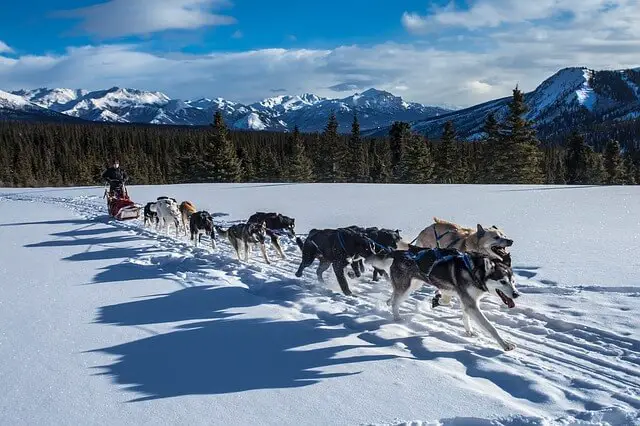
2. Size difference Malamute vs. Husky
The most noticeable difference between the Malamute and the Husky is their size. The Alaskan Malamute is visibly larger and bulkier than the Siberian Husky. The Husky is by no means a small dog, but the Malamute is even bigger.
Huskies can grow to the height of 20 - 23.5 inches and weigh as much as 60 pounds, while Malamutes reach a height of 25 inches and weigh as much as 85 pounds. The difference is rather large and can be easily noticed.
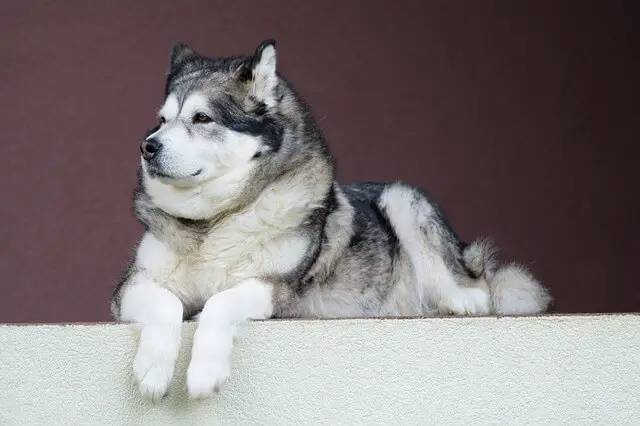
3. Coat difference
If you haven’t studied these two breeds, they can seem to have very similar coats if you just glance at them. There are, however, differences that set them apart, even in their coats. Both breeds are Nordic working breeds, so, naturally, they have a thick, double coat that can keep them warm in freezing temperatures. Malamutes have longer coats than Huskies, and their markings are different. Both breeds can come with black, grey, and even brownish (rust) markings. Malamutes have distinct markings on their head. Additionally, Huskies have straight tails while Malamutes sport a traditional Nordic, curled tail carried over their backs.
Taking care of both of these breed’s coats is not an easy task, and you should have proper tools for it. The FURminator Long Hair Deshedding Tool will become your best partner for that. Also, getting a vacuum cleaner that does the job by itself would be a good idea. The iRobot Roomba 675 can help you with that.
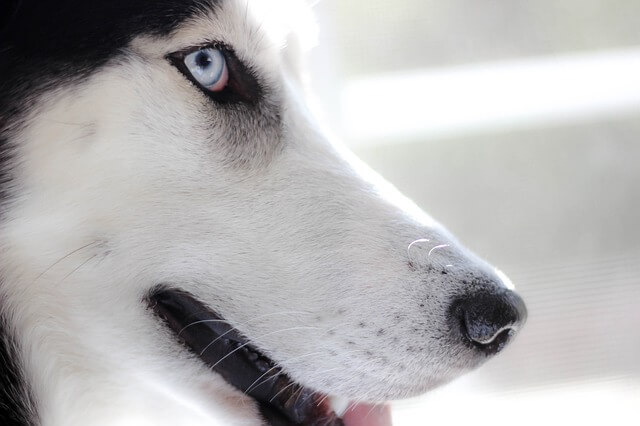
Huskies have famous blue eyes and if you are interested in checking other dog breeds with blue eyes, take a look at this article.
4. Temperament
Most working Nordic, Spitz-type dogs have a similar character. Both breeds are active dogs that are used to having jobs to do. These are not your average, stay-at-home dogs that will enjoy lazy days. They are very active and energetic, and they need to have a decent energy outlet that can help them spend the cooped up energy. Both breeds are friendly towards humans, even strangers, so if you are looking for guard dogs, look elsewhere. Huskies are usually friendly towards other dogs, while Malamutes can be intolerable towards other dogs of the same sex. Both breeds should be socialized from a young age, so problematic behavior is avoided in the future.
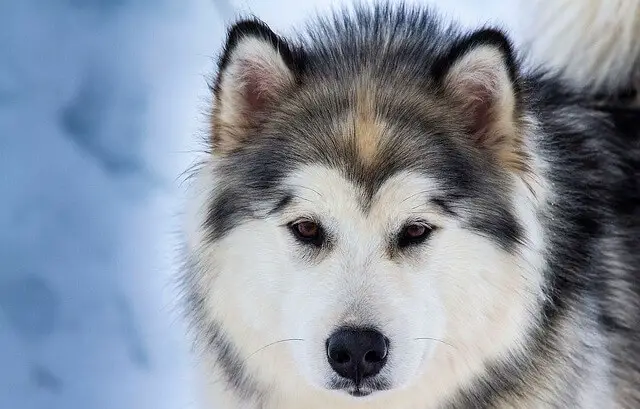
5. Potential health problems
Everyone who gets a dog wants to have the healthiest dog possible. It is humane and financially easier if your pet doesn’t require emergency treatments and surgeries. As a future Husky or Malamute owner, you should be aware of potential problems your dog can develop. Both breeds are generally considered healthy, and Huskies can live up to 15 years, while Malamutes have a life expectancy of 14 years. Both breeds can develop hip dysplasia, cataracts, bloat, and allergies. Mals can develop Willebrand disease, chondrodysplasia, inherited polyneuropathy, and hemeralopia. Huskies can develop corneal dystrophy and progressive retinal atrophy.
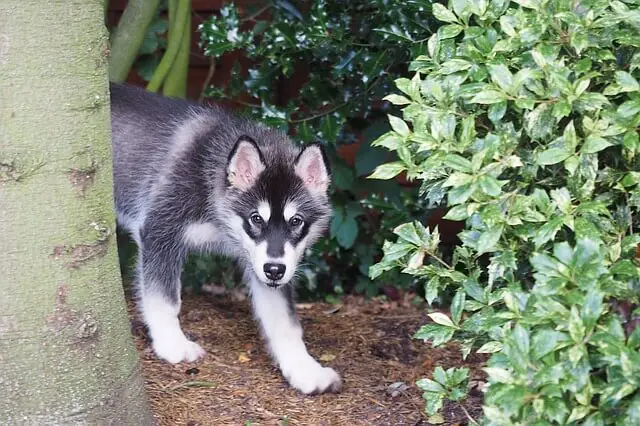
6. Grooming
As we said, both breeds have luscious, thick, double coats that had to keep them insulated in the coldest of environments, and with such coats, the shedding will become a problem. Both breeds shed all year long lightly, but they blow out their entire undercoats twice a year. That happens during the shedding season (spring and fall), and that is when you will have your hands full. These dogs should be brushed regularly, and during the shedding season, daily brushing sessions are required if you want to stand any chance of winning the “loose hair” battle. Their undercoats are fluffy and cotton-like, so don’t be surprised if you witness tufts of loose hair flying around your house or apartment. Since Malamutes have longer coats, they require daily brushing even when it is not shedding season. That way, you will prevent their coat from matting and tangling. Huskies clean themselves rather well and require 3-4 bathes a year. Malamutes should be washed every 6-8 weeks.
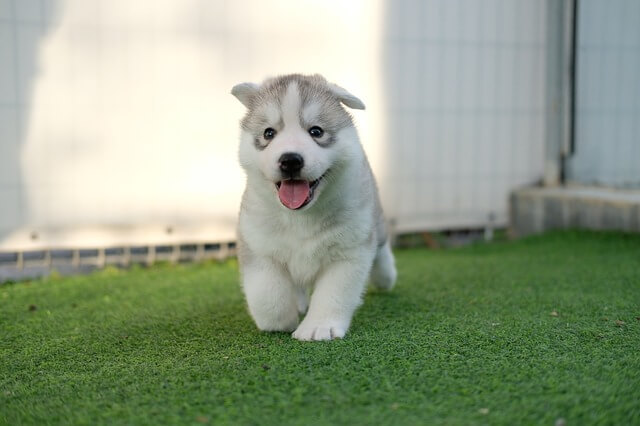
7. Training
All dogs should be trained, and their minds should be occupied by some sort of daily activity. Both the Husky and the Malamute are considered fairly intelligent, and when smart dogs are not occupied, they can get in all kinds of trouble. As a future owner, make sure that you work with your dog regularly and keep them occupied and happy. Both breeds can be stubborn and will need a decent amount of socialization while they are young. Huskies are known to be easier to train than Malamutes, especially in the housebreaking area. Malamutes can be challenging to teach where they should take care of their business.
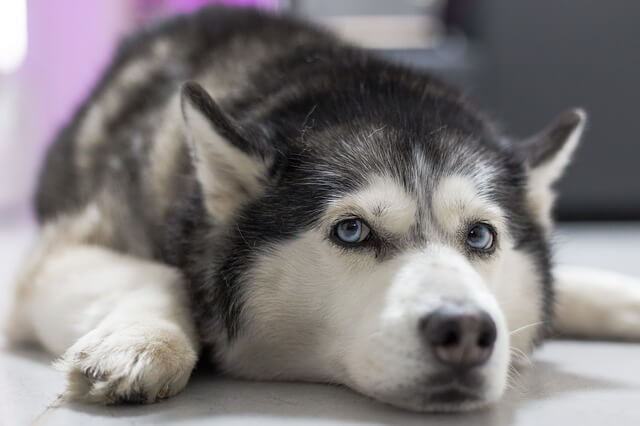
These breeds are pack animals and were bred to work with other dogs in sled pulling. They aren’t recommended for first-time owners because they could be a bit harder to handle, but if you follow our advice and learn about the breed as much as possible before getting one, we are sure you will do a great job raising your Husky or Malamute.
World Dog Finder team

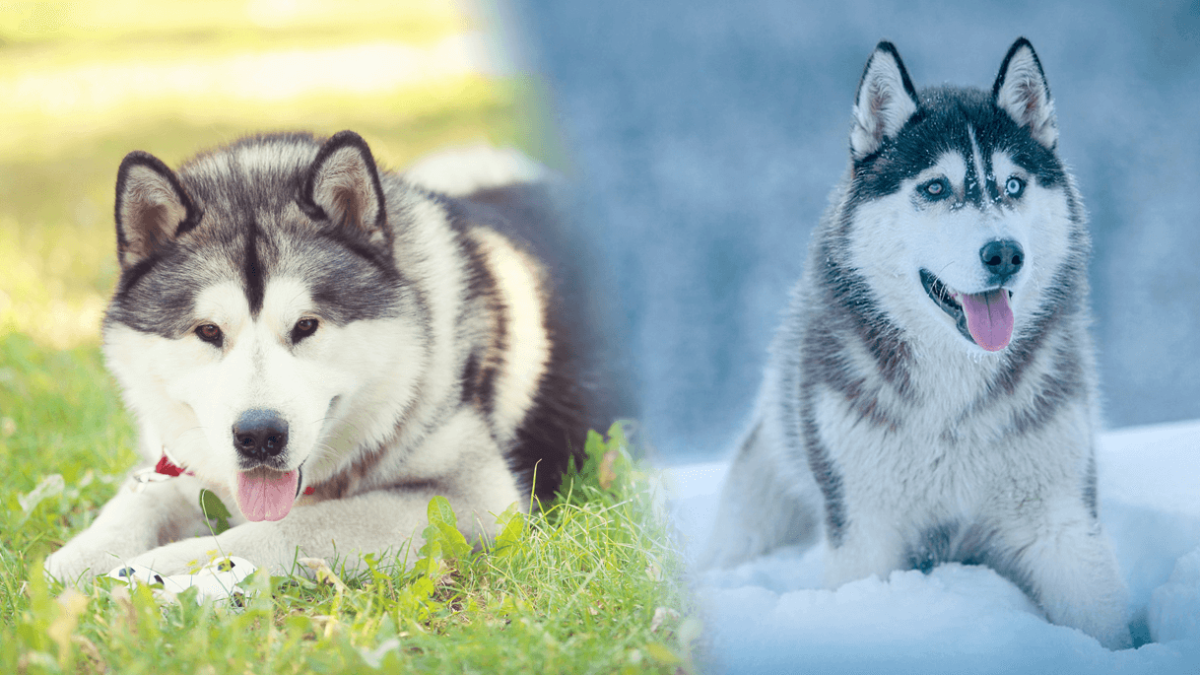

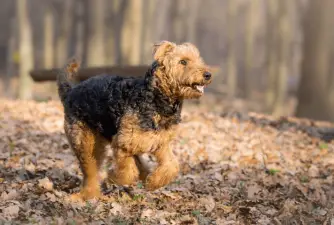
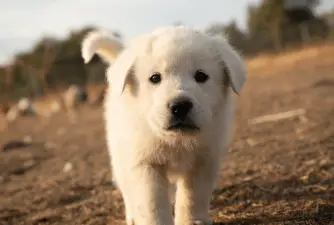


Share